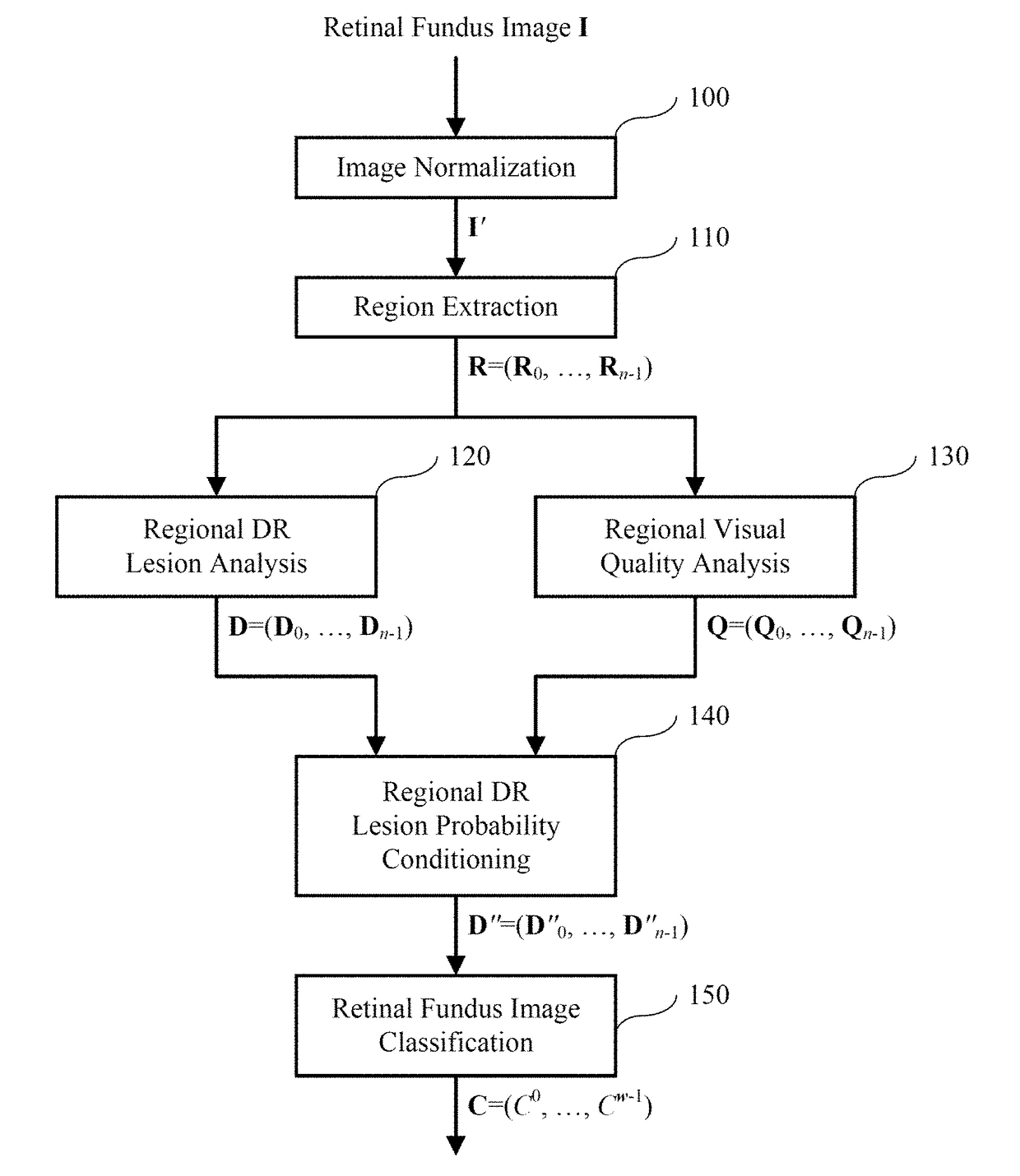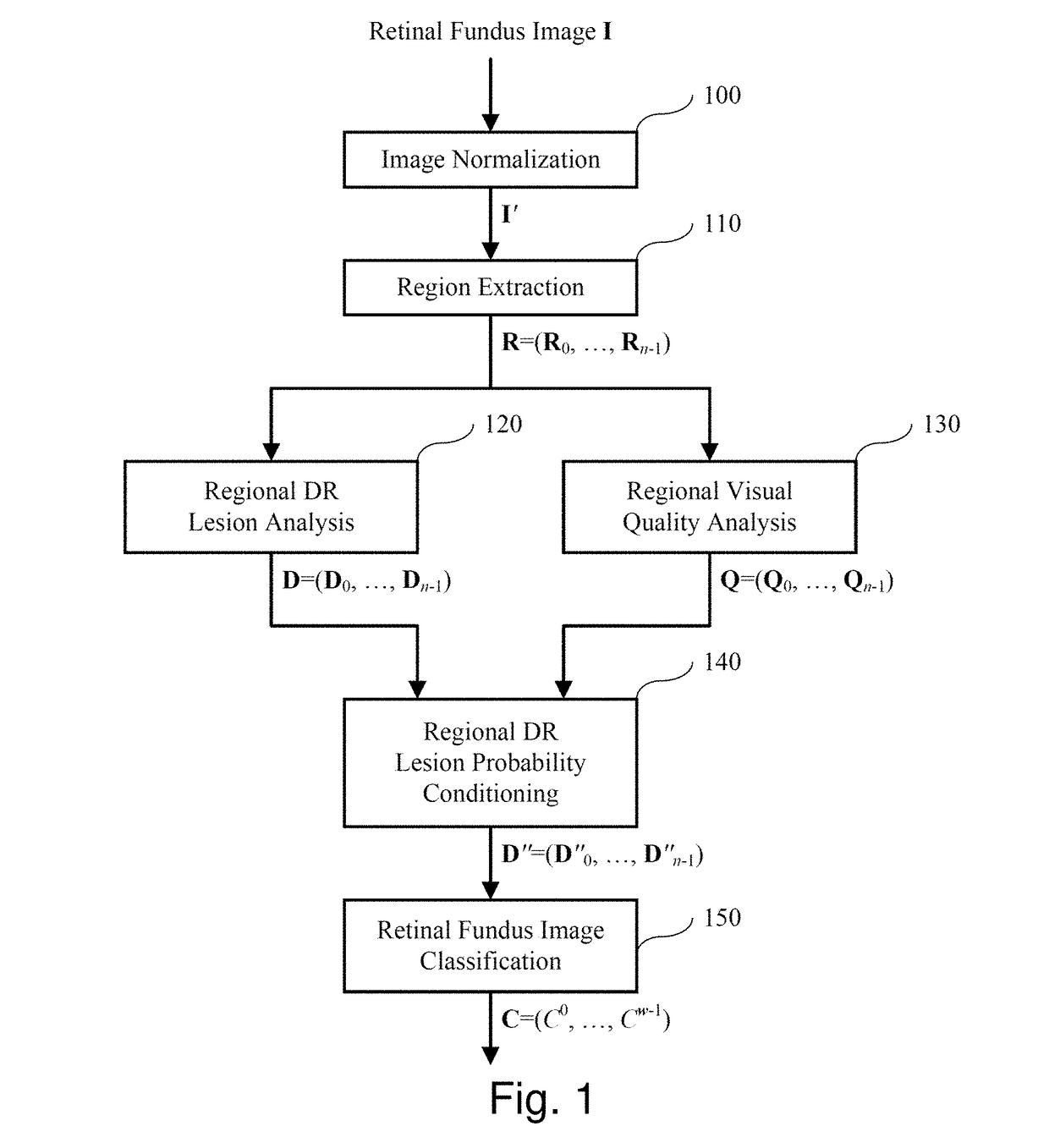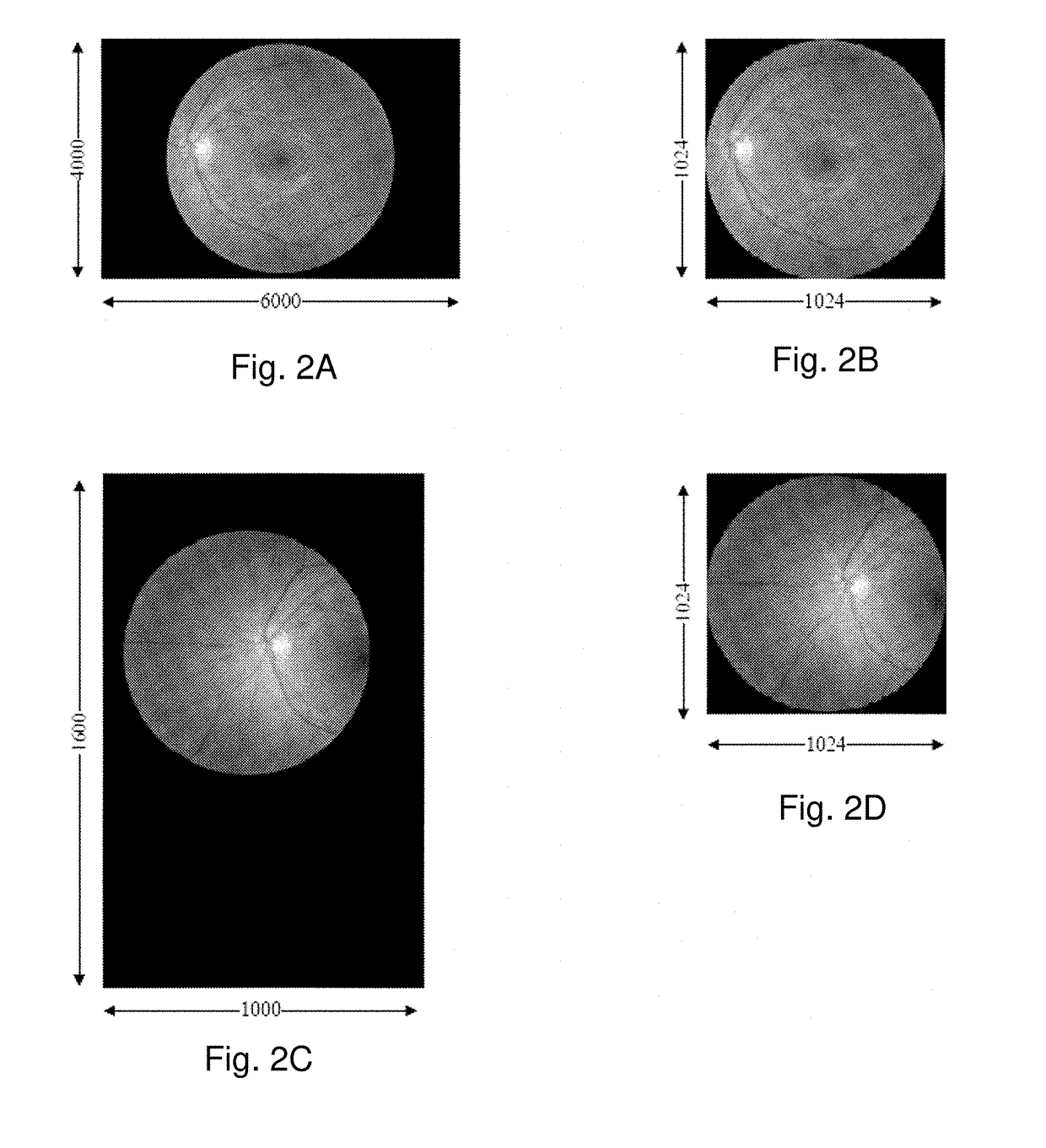System and method for automated funduscopic image analysis
a funduscopic and image analysis technology, applied in the field of automatic funduscopic image analysis, can solve the problems of inability to demonstrate the reliability and accuracy of a trained human, no symptoms a patient can detect, and high cost of manual processes, so as to improve network performance, simplify the problem, and increase the degree of freedom of input data set.
- Summary
- Abstract
- Description
- Claims
- Application Information
AI Technical Summary
Benefits of technology
Problems solved by technology
Method used
Image
Examples
Embodiment Construction
[0127]FIG. 1 illustrates an embodiment of the invention. Given a retinal fundus image I, block 100 performs image normalization to produce a normalized image I′. This normalization step involves identifying the retinal disc in I and resizing it to a fixed size, i.e., to a diameter of p pixels in an image of p×p pixels, where, typically, p=1024. This is illustrated in FIGS. 2A-2D, where FIG. 2A and 2C show pre-normalized retinal fundus images I and FIGS. 2B and 2D show the corresponding normalized retinal fundus images I′. Automatic detection of the retinal disc is a straightforward task which entails the detection of a relatively bright disc on a relatively dark and uniform background. As such, a number of well-known image processing techniques may be used, such as edge detection, circular Hough transform, etc. More details of such techniques may be found in Russ, John C. The image processing handbook. CRC press, 2016.
[0128]Next, in block 110 of FIG. 1, retinal regions are extracted...
PUM
 Login to View More
Login to View More Abstract
Description
Claims
Application Information
 Login to View More
Login to View More - R&D
- Intellectual Property
- Life Sciences
- Materials
- Tech Scout
- Unparalleled Data Quality
- Higher Quality Content
- 60% Fewer Hallucinations
Browse by: Latest US Patents, China's latest patents, Technical Efficacy Thesaurus, Application Domain, Technology Topic, Popular Technical Reports.
© 2025 PatSnap. All rights reserved.Legal|Privacy policy|Modern Slavery Act Transparency Statement|Sitemap|About US| Contact US: help@patsnap.com



